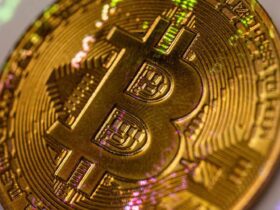PulseChain isn’t some meme token. It’s a full-blown Layer-1 play with real tokenomics, a cult-like community, and DeFi infrastructure quietly growing under the radar. If you’re looking at PLS in 2025, you’re not window shopping — you’re eyeing your next high-conviction bet.
Let’s break down what serious investors are tracking right now — and where this thing could realistically go.
Current PLS Price Action: Quiet… but Not for Long
As of April 2025, PulseChain (PLS) is hovering near the $0.000067 mark with tight range consolidation and weekly volume tapering. This is the classic accumulation zone before either a breakout or breakdown.
But if you zoom out, this is what seasoned traders call pre-distribution boredom — the kind that precedes parabolic moves.
Realistic PulseChain Price Targets for 2025
| Scenario | Price Target 2025 | Catalyst |
|---|---|---|
| Bearish | $0.000045 | Low TVL, stalled adoption |
| Baseline | $0.00012 | Market-wide rally + PulseX user growth |
| Bullish | $0.00042–$0.0006 | CEX listings, RH legal win, TVL surge |
Investors with a long enough time horizon are treating anything below $0.0001 as “generational entry” territory — not financial advice, just observation.
Why PulseChain Still Has Firepower
1. Built-In Demand from PulseX
DeFi incentives drive real demand. PulseX is burning tokens daily. Less supply, more buy pressure.
2. ETH Fatigue = Alt L1 Rotation
Fees on Ethereum are back up. PulseChain’s low fees are attracting devs and users looking for alternatives.
3. RH Community is Quietly Loading Up
The community may be toxic on Twitter, but they’re still staking, buying dips, and holding like their lives depend on it. That matters more than memes.
PLS Is Still a DEX-Centric Play
Let’s be real: PulseChain is still heavily dependent on DeFi-native users. It’s not on Coinbase. There’s no Robinhood integration. And that’s exactly why the upside exists. Once retail has easy access? You won’t see these prices again.
Look for bridge volume increases. When liquidity starts flowing from other chains, it’s game on.
Technical Levels You Should Know (April–June 2025)
-
Key Support: $0.000046 – psychological and historical buy zone
-
Breakout Resistance: $0.00013 – last major high from January 2024
-
Volume Spike Watch: Above $0.0001, expect algo and whale movement
MACD flipped bullish on the daily chart. RSI? Hovering just under 50. It’s coiled like a spring.
What Could Send PulseChain to the Next Level in 2025
-
Listing on Tier 1 Exchange (Binance, Kraken)
PLS needs a top-tier CEX listing to ignite mainstream momentum. -
Richard Heart Legal Clarity
Like it or not, he’s the face of the ecosystem. Any positive outcome = green light. -
Cross-Chain Liquidity Pools
Once PulseChain integrates with major bridges and stablecoin liquidity flows in, the DeFi volume will follow.
PulseChain in 2025: Buy, Hold, or Wait?
If you’re asking that, you’re already on the right page. Here’s the mental model most high-level investors are using:
-
Short-Term Traders: Wait for breakout confirmation above $0.00013
-
Long-Term Investors: DCA below $0.0001 and monitor TVL + active users
-
Speculators: Watch Richard Heart’s next move — like it or not, he’s the signal
FAQs
Q: Will PulseChain hit $0.01 in 2025?
Highly unlikely — unless the entire crypto market adds $10T in value. Realistic ceiling for this cycle? Between $0.0003 – $0.0006.
Q: Is PulseChain still being developed?
Yes. GitHub commits, validator activity, and on-chain usage all confirm continued development.
Q: Where can I buy PLS?
PulseX is the main DEX. Other options: cross-chain bridges or peer-to-peer swaps. It’s not CEX-friendly yet — and that’s the edge.
Q: Is PulseChain a long-term hold or short-term trade?
Depends on your thesis. If you believe in ETH-alternatives and early-stage ecosystems, it’s a high-risk, high-reward long-term play.
PulseChain isn’t dead. It’s dormant. The next leg up will catch retail off guard — but not you. The smart money is already watching the metrics that matter: TVL, validator count, DEX burn rates, and wallet growth.
This isn’t about hoping it moons. It’s about knowing what moves it.















Leave a Reply